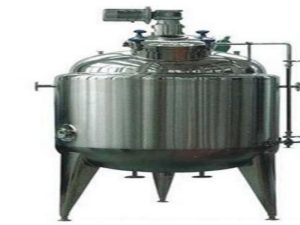Biological enzymatic hydrolysis tanks are widely used in fields such as textile dyeing and finishing, enzymatic conversion of proteins, and biodegradation of wastewater. The temperature-controlled enzymatic hydrolysis tank is a stainless-steel container that provides the required temperature for process enzymolysis, adjusts the pH value, and provides stirring and mixing to maintain enzyme activity, exert enzyme function, and accelerate and complete the biological reaction process. The biological enzymatic hydrolysis technology utilizes suitable biological catalysts, namely biological enzymes, to decompose substances, accelerate the decomposition and conversion process, and transform them into materials conducive to utilization, achieving the objectives desired in experiments or production processes.
The main tank body is welded by three layers of stainless steel. The inner tank is made of high-quality stainless steel SUS316L, polished to meet the hygienic standards for food and pharmaceutical industries. The interlayer is made of SUS304 stainless steel, equipped with stainless-steel flow guide plates to facilitate the flow of steam and circulating water. The outer layer is welded and filled with stainless-steel insulation.
The system mainly consists of the enzymatic hydrolysis tank, steam heating system, circulating cooling system, stirring system, pH adjustment system, feeding system, discharging system, filtering system, cleaning system, electrical control, and preparation tank, etc.
The stainless-steel biological enzymatic hydrolysis tank has the functions of heating, cooling, heat preservation, and stirring. The tank body is designed with process nozzles such as material inlet, pure water inlet, discharge outlet, and sampling port, which can provide the conditions for the enzymatic hydrolysis process. After the enzymatic hydrolysis is completed, the jacket can be opened to introduce direct steam for enzyme deactivation. After enzyme deactivation is completed, the material can be cooled down, and then the discharge valve can be opened for discharging.
